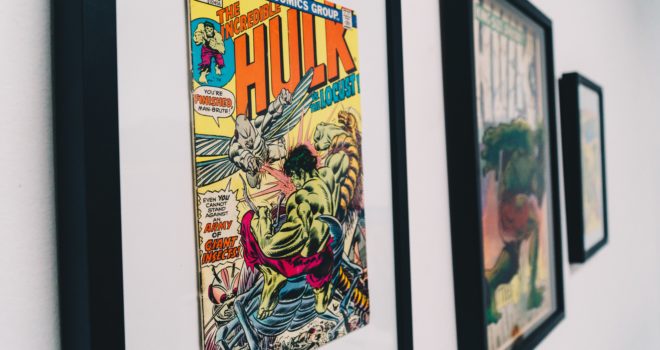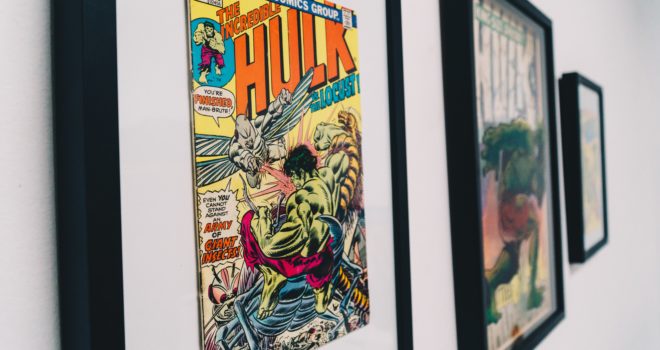One of my favorite parts about being married to a Seminary professor is getting to know so many seminarians and watch them grow into “baby” priests. These relationships and the faith of these young men have deeply impacted my family and my personal faith. One of the young men that our family got to know well went on to become a priest with a podcast, and I have enjoyed listening to him ponder various aspects of the faith with another priest (who our family has also gotten to know). It is a delightful podcast, and I definitely recommend giving it a listen.
I typically agree with the opinions of this priest friend of ours, but I listened to a recent episode he did about the latest in the Marvel series, She-Hulk: Attorney at Law, and I found myself yelling at my car stereo. (Sorry, Fr. Travis!) He was deeply concerned that it was another instance of the secular media claiming that women could do everything that men could do, and therefore misrepresenting the feminine genius.
And, as I previously did when my seminarian friends worried that The Last Jedi espoused a feminist ideology, I want to push back on this idea. (Warning – spoilers ahead!)
Posing Toxic Feminism as the Main Problem
Jennifer Walters is a lawyer – one who has fought her way through law school and law firms to build a career. Although she doesn’t describe it as such, the “fighting” has as its source both toxic masculinity and toxic feminism. Up until this point, Jennifer has been looked down on because of her womanhood. She is surrounded by toxic males – ones who mock her, disparage her contributions, and hold her to the same expectations that they expect of men. And as is the case in toxic feminism, she holds herself to these standards, too.
The real problem posed at the beginning of the movie is not females disparaging males, but rather the men and women of our society thinking that women must adapt to male expectations in order to succeed.
The reality is that God did not make men and women “equal” in abilities, but rather equal in dignity. Instead of making them equal in abilities, he made them complementary.
It is Not Good That He is Alone
In the first episode, Jennifer is going on a road trip with her cousin, Bruce Banner. Marvel fans will recognize Bruce as the Hulk – the one featured in various other movies and series. As they are driving, they nearly collide with an alien craft of some sort, and careen down a hill. In the course of the accident, some of Bruce’s blood drips into one Jennifer’s cuts…and suddenly she, too, possesses the powers that he does. She is now “a Hulk,” too.
Bruce and Jennifer are no Adam and Eve – they are not spouses, but cousins. Yet, all good art mirrors the Truth in some way, and we can find here traces of the story of Adam and Eve. Bruce has wandered for years alone and misunderstood. Suddenly, born at his side, is one of his kind – but in female form. Hulk is no longer alone, but now has She-Hulk as a companion and friend. Like Eve, she was born at his side, made from a part of him (his blood dripping into her veins).
And with that, like Adam before him, Bruce is no longer alone in his reality.
Not in Competition with Men
After the accident, Bruce takes Jennifer to his secret hideout, where he tries to initiate her into the ways of being a Hulk. He explains to her that it took him years to master these abilities – the process of shifting from human Bruce to the out-of-control Hulk to the Hulk that is also still Bruce. He is surprised when she quickly adapts to her new abilities – far quicker than he did.
My podcasting priest friend worried that this meant that Jennifer (now the “She-Hulk”) was simply playing out the same old feminist trope – women can do everything that men can, but better. I would like to consider a different interpretation.
Women are designed in such a way that they are receptive in a way that men cannot be. It seems fitting that Jennifer adapted to being a Hulk more quickly than Bruce did. The male body is not designed to receive the life of another, adapting to the physical fluctuations that must happen to accommodate new life. When Bruce first became a Hulk, he experienced this foreign life/abilities in a way that was in keeping with the design of a male. Men are designed to reach out, to protect externally, to fend off intruders. They are not physically designed to receive. Bruce’s body did what men’s body’s are designed to do – he fought the Hulk side of himself. He wrestled to absorb it, to allow it to grow and integrate it as a part of himself. The sudden physical fluctuations were foreign to his male body, and it took intense training to learn to manage them. In the end, he lives out his Hulk nature in a very male way – he is focused on training and honing physical strength, on controlling his abilities, and on using them for the sake of external, physical protection of others.
However, when Jennifer receives her Hulk nature in her female body, she receives it in a way that only a female could. The female body is designed to be open to receiving foreign life – to embrace her husband, to make a home that is safe and not hostile for a new baby, and to receive others into her heart and nurture them. Jennifer, as She-Hulk, is able to physically absorb these new abilities and capacities. She is able to adapt quickly to her physical shifting between Hulk and human, having long been accustomed to the physical, hormonal fluctuations of womanhood. She receives Hulk-ness with ease, because that gift of reception is wired into who she is as a woman. It is part of the feminine genius – to recognize others as not intruders or threats, but worthy of welcome and love.
And yet, we can see that with both of them, part of why they are able to accept or struggle to accept their Hulk side is related to the ways that society attacks both masculinity and femininity. Jennifer reveals to Bruce that she is used to having to control her emotions because of the verbal abuse she has endured from men in her line of work. She has had to adapt, and ultimately that adaptation is what makes her a good Hulk.
Likewise, Bruce has always been a kind, gentle man, living in a world that proclaims that the strength of a man is “toxic.” His Hulk strength is mistrusted and misunderstood for that reason, but eventually, Bruce is able to fully integrate that part of himself because he possesses true masculinity – strength in gentleness, and a strength that can be tamed and wielded in turn.
She-Hulk and Hulk are not in opposition to the Christian view of the male and female – but they (perhaps unwittingly) show the gift of the complementarity between them.
Photo by Hermes Rivera on Unsplash












